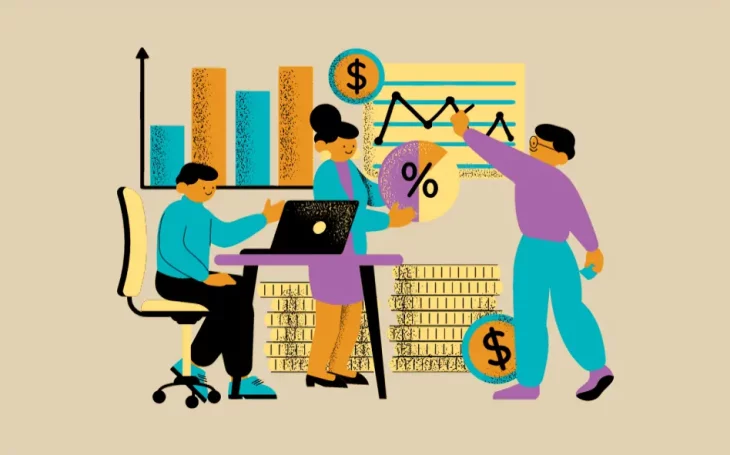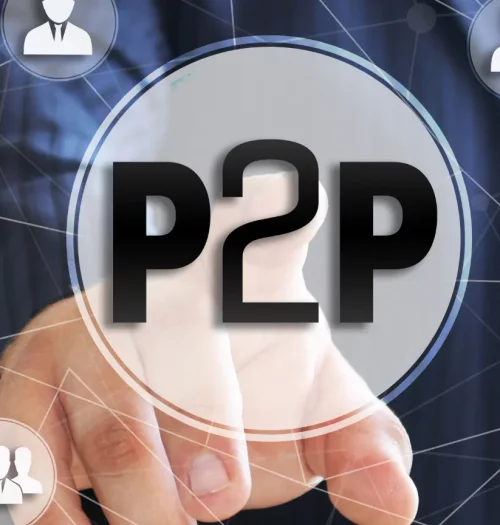Revolutionizing Credit Underwriting with AI and Data-Driven Approaches



Introduction: Indian Lending Ecosystem and Importance of Data and AI
The lending landscape in India is diverse and multifaceted, encompassing a variety of platforms and institutions. These include traditional banks, platforms catering to Small and Medium Enterprises (SMEs), consumer-focused lending platforms, retail card providers, platforms with a focus on financial inclusion, and peer-to-peer lending platforms.
Within this landscape, the role of data and Artificial Intelligence (AI) is pivotal in shaping decision-making tools for lenders using a comprehensive digital lending software to streamline their lending operations. These tools are crucial in assessing and managing risks, and in making lending processes more efficient and reliable. Data and AI serve as the backbone for various operations such as sales, underwriting, collections, and early warning systems in both lending and insurance sectors.
The ecosystem is continuously evolving, with the emergence of new entities further enriching the diversity of the lending environment. Data providers and underwriting platforms play a significant role, emphasizing the indispensable value of data in the ecosystem.
However, a prevailing paradox in the industry is the universal desire for access to free data from a multitude of sources, while simultaneously maintaining the proprietary nature of individual algorithms. This highlights the competitive and secretive nature of the industry, where the exclusivity of data processing methods is guarded, despite the communal aspiration for shared data resources.
Challenges in Data Utilization and The Role of Alternate Data
The availability of data is abundant, yet its effective utilization remains a significant challenge, especially for banks. Emerging platforms are leveraging data for early warning systems, enabling the generation of real-time cases and enhancing responsiveness in lending processes.
Challenge 1: Underutilization of Available Data
Many entities, particularly banks, find it difficult to harness the vast amounts of available data effectively. This underutilization hampers the optimization of lending processes and decision-making.
Role of Alternate Data: Alternate data, such as Goods and Services Tax (GST) transactions and tax returns, can offer more accurate and relevant insights compared to traditional data sources like bank statements. This enhanced accuracy and relevance lead to improved transparency, better book quality, and enriched customer knowledge.
Challenge 2: Misalignment of Data Models with Real-life Applications
Data models, developed by data scientists, often do not align well with real-world applications. These models can sometimes be too restrictive, limiting their applicability in lending scenarios.
Role of Alternate Data: Utilizing alternate data can help in creating more realistic and adaptable models, bridging the gap between theoretical data science and practical application. This adaptability ensures that the models are reflective of real-world scenarios, making them more reliable in lending contexts.
Challenge 3: Bridging the Gap between Human and System Thinking
There is a pressing need to reconcile human thinking with system thinking in data utilization. This reconciliation is crucial to ensure that the insights derived are coherent with human understanding and are applicable in real-world scenarios.
Role of Alternate Data: Alternate data aids in bridging this gap by providing more contextual and comprehensive information, allowing for a more harmonized integration of human insights and system-generated data. This harmonization ensures that the systems are more in tune with human reasoning, enhancing their applicability and reliability.
Navigating Through Financial Inclusivity By Using Alternate Data
Advancing Financial Inclusion through Innovative Data Structures
Financial inclusion remains a global imperative, with billions around the world still lacking access to essential financial services and credit. Addressing this issue requires innovative approaches to data utilization, focusing on the integration of alternate data structures with traditional ones, to expedite the realization of financial inclusion.
The Global Imperative of Financial Inclusion
Financial inclusion is a pressing global issue, with almost three billion people either underbanked or unbanked, according to World Bank reports. This lack of access to credit and financial services hampers economic growth and development, especially in countries with significant populations lacking proper banking services. In India alone, only 35 to 40 percent out of 1.3 billion people have access to credit, underscoring the urgent need to address this gap.
Innovative Approaches to Credit Access
To bridge the gap in credit access, it is crucial to explore non-traditional methods of information collection from diverse sources and leverage advanced analytics to cater to underserved segments. The integration of various data sources and enhancement of data processing are vital for improving underwriting and customer management, facilitating the provision of financial services to those who need them most.
Accelerating Financial Inclusion through Tailored Offerings
While innovations in customer-centric products and financial infrastructure are underway, the challenge of underwriting the right customers persists. It is essential to align the right offerings with the right customers, ensuring the provision of exact financial products as needed. The commitment from government, public and private sector banks, NBFCs, and fintech companies is commendable, but understanding and estimating the identity, intent, and capacity of consumers is crucial to offering unique and timely financial products.
The Pivotal Role of Alternate Data
Alternate data plays a significant role in addressing the challenges of financial inclusion. More organizations are recognizing the value of processing alternate data over traditional data to solve problems related to financial inclusion. Understanding and defining what constitutes alternate data, which includes both structured and unstructured types, is crucial. This understanding is pivotal for leveraging alternate data effectively to address the inherent problems in achieving financial inclusion.
Understanding Structured and Unstructured Alternate Data
Definition:
- Alternate data refers to any digitally available data that is not considered traditional data.
- It includes mobile internet usage, electricity and utility usage, social and digital footprinting, and online shopping behaviours.
Categories:
- Structured Data: Requires minimal effort to curate and process.
- Unstructured Data: Includes social media footprints, internet usage, email, and text messages.
Importance of Proper Utilization:
- It’s crucial not only to collect but also to curate this information properly.
- Applying the right analytics, AI, and ML is essential to draw accurate inferences.
- Addressing hidden patterns and systematic biases within this data is vital.
Utilization of Structured and Unstructured Data in Underwriting and Portfolio Management
Various sectors such as lenders, insurance companies, and telecom are leveraging both structured and unstructured data for underwriting and portfolio management, utilizing advanced analytics and machine learning. This utilization is leading to the development of multi-data scores and diverse credit modeling. There is a pressing need to comprehend the type of data required and the effective methods to use it. Proper understanding and utilization of data expedite financial services, mitigate systematic biases, and enhance overall underwriting and acquisition processes, paving the way for more informed and equitable financial solutions.
Levels of Data for Lending Institutions
Lending institutions perceive all data as credit data, encompassing both financial and alternate data. There are distinct levels of data that these institutions utilize to gain insights and make informed decisions.
1. Financial Account Data:
This is the primary level of data, consisting of accounting data and transaction-level information. It includes historical repayment tracks and exposure taken on customers, sourced either from the customer side or credit bureaus. This data is foundational for understanding the financial behaviours and reliability of customers.
2. Payment Data:
This level encompasses bill payment data, including utility bills, electricity bills, water bills, phone bills, DTH cable rentals, and GST transactions. Analyzing this data allows institutions to gain deeper insights into customers and align their requirements with the available offerings in the industry. The reliability of this data is significant as it reveals monthly spend patterns, consistent behaviour, and financial discipline of the customer.
3. Levels of Reliable Alternative Data Sources (Level 2 Data):
The integration of level two data, such as bill payments, with level one information, when available, provides a comprehensive view of the customer’s financial behaviours and preferences. It is crucial for seamless and faster underwriting, especially when level one data is not available, to offer tailored solutions to customers.
4. Non-Financial Data and Customer Behaviour (Level 3 Data):
This level introduces non-financial data, including educational details, employment details, retail purchase information, social networking, and psychometric surveys. This data is pivotal for assessing customer behaviour, thought processes, lifestyle choices, and spending patterns. It becomes especially crucial when level one data is not available. When combined with level two data, it provides a full 360 view of the customers, facilitating the underwriting process and enabling the provision of diverse offerings like small ticket personal loans, payday loans, and revolving credit.
Building a Comprehensive Alternate Data Ecosystem for Financial Inclusion
1. Establishing a Robust Ecosystem:
Creating a resilient alternate data ecosystem is pivotal. It is essential to ensure data accuracy, correctness, and compliance with regulatory approvals within the lending ecosystem. A robust ecosystem requires depth and breadth in data sources and effective utilization of data for predictive analysis, adding significant value to the lending processes.
2. Addressing Financial Inclusion:
Alternate data can significantly address the challenges of financial inclusion and credit access, especially in countries like India, which is among the top three countries grappling with these issues. Proper utilization of various available datasets can accelerate financial inclusion, catering to those new to credit and those without any credit footprint. The use of psychometric and social network data is crucial to integrate unbanked customers into the financial ecosystem, leveraging digital data footprints, especially with the increasing number of internet and mobile users, as a new source of information.
3. The Role of Advanced Analytics and Machine Learning:
Collecting information from various data sources is crucial, but deriving meaningful outcomes from this information through AI, ML, and advanced analytics is equally important. The focus should be on how to consume this set of information effectively, building advanced analytics, machine learning, and AI to curate and process this information and consume the right inference as part of the overall acquisition process.
4. Adapting to Global Uncertainties:
In the face of global crises and uncertainties, there is a need for the realignment of financial services. Adapting to new ways of using various digital sources and data for underwriting customers and providing solutions is essential to navigate through the evolving financial landscape and to continue to serve customers effectively.
The Crucial Role of a Robust Data Strategy in Customer Value Maximization
Developing a comprehensive data strategy is pivotal for organizations aiming to enhance the lifetime value of their customers. A well-rounded strategy revolves around gaining profound insights into customer behaviours, preferences, and needs. It is essential to incorporate provisions in the data strategy for new data that will emerge in the future and to analyze historical data to draw meaningful inferences and make informed decisions.
Consistency and Precision in Data Strategy:
Having a robust and precise data strategy is crucial. It necessitates the availability of consistent, clean, and accurate data, formatted appropriately for consumption by AI and ML platforms. This precision and consistency in data are vital for making coherent and reliable lending decisions. The significance of forming strategic data partnerships cannot be overstated, as they play a crucial role in enriching the data pool available to organizations.
Alignment with Business Goals:
A well-structured data strategy should align seamlessly with the business objectives of banks and other lending institutions. It should consider various factors such as available capital, risk tolerance, product and client segments, and regulatory constraints. This alignment ensures that the data strategy not only supports but also propels the achievement of business goals, fostering organizational growth and customer satisfaction.
The Power of AI and ML in Lending Decisions
AI (Artificial Intelligence) and ML (Machine Learning) have transformative power in lending, enabling the programmatic combination of variables from diverse sources. They can convert these variables into hundreds or thousands of features with predictive value, enhancing the decision-making process. Automated tooling is crucial for creating feature sets, training models, and evaluating output for underwriting and scoring.
Scoring is just one component of a lending decision. AI and ML do not function autonomously; they work in tandem with business rules. The integration of AI and ML with business rules is essential to serve customers effectively and align with the bank’s business objectives.
Role of Business Rules and Policies in Lending Decisions using AI & ML
Significance of Business Rules in Lending Decisions:
- Business rules play a pivotal role in determining grantable amounts, fraud prevention, interest rates, and risk-based pricing in lending decisions.
- Policies can override scoring models and business rules to achieve specific outcomes, such as allocating higher loans to farmers affected by natural disasters.
- AI and ML complement, not replace, business expertise, working together to optimize lending decisions.
Understanding and Labeling Data Correctly:
- Proper understanding and correct labeling of data are crucial.
- It is essential to rely on the expertise of bank personnel to comprehend the implications of the data and to apply it effectively.
- This understanding ensures that data is utilized optimally to make informed and equitable lending decisions.
Incremental Improvement and Monitoring
Enhancement through Incremental Improvement:
- Implementing AI and ML is not about replacing existing underwriting models but about augmenting them.
- The integration of new alternative data can lead to incremental improvements in existing models, optimizing their performance.
Real-Time Monitoring for Desired Outcomes:
- Continuous monitoring of the performance of the portfolio and lending models is crucial.
- Real-time monitoring ensures that the models are operating effectively and achieving the desired outcomes, allowing for timely adjustments and optimizations.
AI and ML in Lending Decisions and Model Transparency
Demystifying AI in Lending Decisions:
- Concerns about AI being a “black box” are addressed by modern AI technology, which offers insights into the decision-making processes, ensuring fair and responsible lending. AI analyzes the data objectively and bases its decisions on the available data, promoting transparency and fairness in lending practices.
Transparency Techniques and Validation:
- Transparency techniques are employed at the model level to elucidate how the model operates and to forecast its functioning. Every decision made at the loan level is visible and can be validated, thanks to integrated reporting and analytics, ensuring accountability and reliability in lending decisions.
Customer Profiling and Scoring Process
- AI and ML have the capability to deeply analyze data and create distinct scores across different dimensions for MSME clients. This enables a comprehensive comparison between different MSMEs and facilitates their approval based on the overall combination of scores, allowing for more nuanced and informed lending decisions.
- Gaining a deeper understanding of the customer is crucial to serve them effectively, grow lifetime value, and identify opportunities for cross-selling and upselling. This comprehensive understanding allows for the provision of tailored services and recommendations, enhancing customer satisfaction and engagement.
Real-Time Decision Transparency
The illustration of real-time transparency in lending decisions reveals the impact of various variables, both positive and negative, on the decision-making process. This insight is provided for every lending decision in real time, enabling hyper-personalized customer engagement and precise customer segmentation. Such transparency is instrumental in driving marketing strategies, cross-selling, upselling, and collection type activities, allowing for more targeted and effective customer interactions and interventions.
Model Governance & Regulatory Compliance
Model governance is crucial, necessitating institutions to have a profound understanding of how their models operate and to maintain comprehensive documentation to ensure compliance with regulatory bodies. The documentation should elucidate the functioning of the models, and it is imperative to measure this against actual outcomes to verify that the model is operating as anticipated. This approach ensures the reliability and compliance of the models, fostering trust and adherence to regulatory standards.
Portfolio Performance Monitoring
The integration of a portfolio performance monitoring system with the scoring and lending decision system is crucial, as it generates insightful portfolio analytics. This system provides analytics on various aspects such as
- portfolio growth by customers and revenue,
- portfolio disbursements,
- bad rates at different DPD levels, and
- financial margin.
Such comprehensive analytics allow for an in-depth understanding of the portfolio’s performance, enabling more informed and strategic decision-making to optimize portfolio outcomes.
Fair Lending and Model Improvement
Ensuring fair lending is paramount, and it is crucial that the model lends appropriately and aligns with KPIs. The use of real-time graphs, fed by the underwriting system, allows for the monitoring of various demographic aspects such as caste and religion, with alerts being set if deviations from the expected or accepted range occur. It is vital to strive continually towards business goals, recognizing that while no underwriting model is perfect, continuous improvement is achievable by analyzing outcomes and integrating changes in customer behaviour and environmental conditions into the scoring model. This approach ensures the model’s adaptability and accuracy in reflecting and responding to evolving customer behaviours and circumstances.
Conclusion
In conclusion, the transformative power of AI and ML in the lending sector is undeniable, serving as pivotal tools for evaluating extensive data to support underwriting decisions and for constructing comprehensive customer profiles for enhanced understanding. It is crucial to comprehend the data thoroughly, establish a structured process for its acquisition, organize, and format it aptly before integrating it into the ML/AI engine, whether in real-time or a batch scoring process. Embracing AI doesn’t necessitate an overhaul of existing systems; it can be an evolutionary journey, building upon and enhancing what is already in place, allowing for gradual and sustainable advancement in lending processes and customer understanding. This approach ensures a seamless transition and optimization of AI and ML technologies in lending, paving the way for more informed and equitable financial solutions.
Related Post

Is P2P Lending Really A Threat To Non-Banking Financial Companies (NBFCs)?
P2P lending is a relatively new kid on the block

How Branchless Banking is Facilitating Financial Inclusion
One of the biggest boons to mankind in recent years
- Email: salesteam@cloudbankin.com
- Sales Enquiries: +91 9080996606
- HR Enquiries: +91 9080996576
